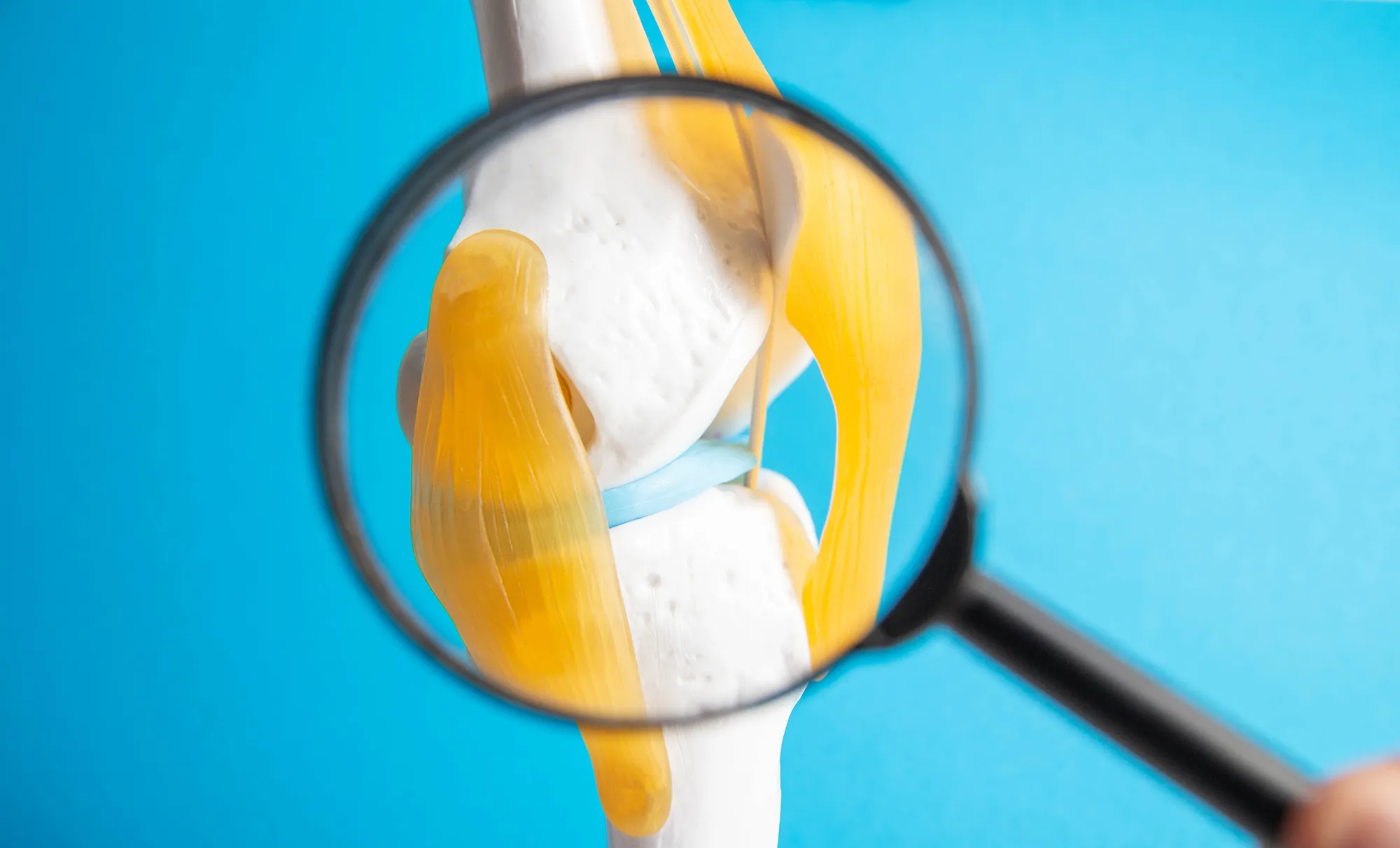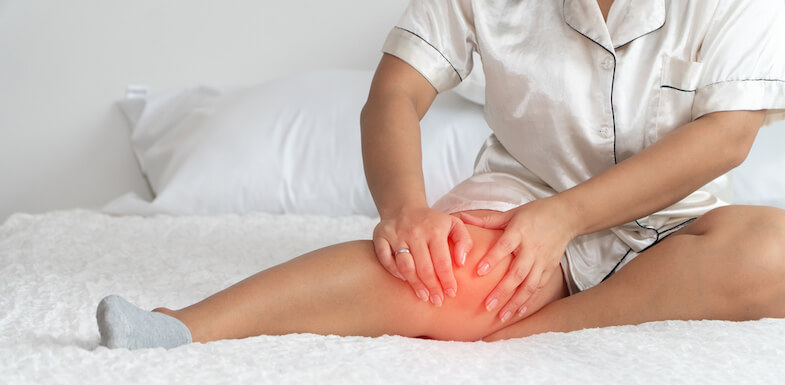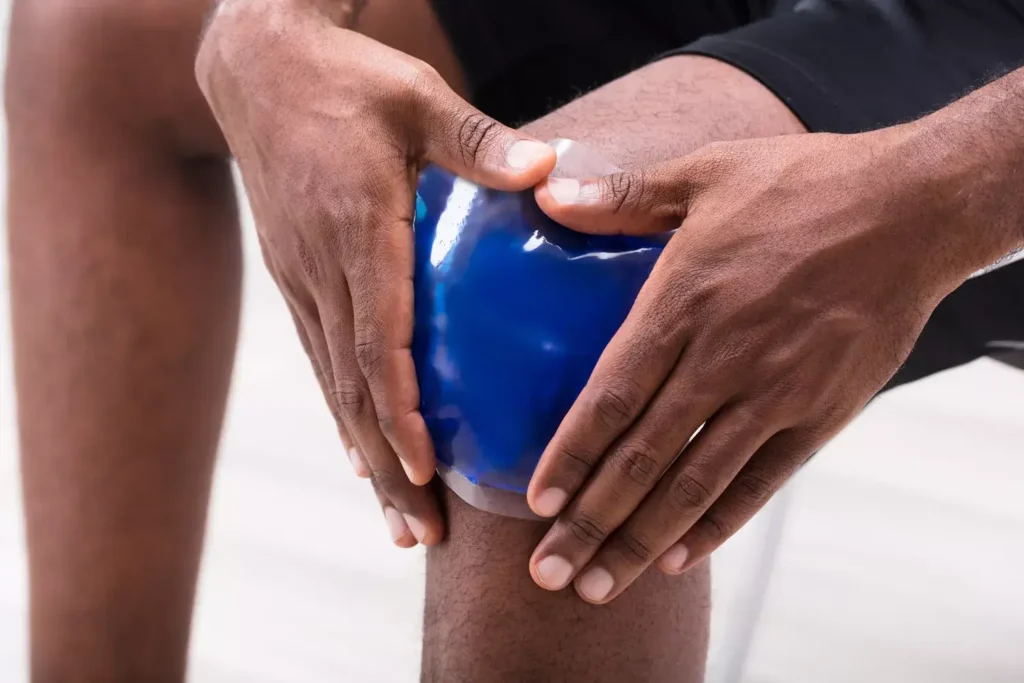Knee bursitis is a common condition that can be painful and limiting, but with the right treatment and care, it often goes away over time. In this article, we will explore knee bursitis in detail, including its causes, symptoms, recovery time, treatment options, and tips for managing and preventing it.
Understanding Knee Bursitis

Knee bursitis is a medical condition characterized by the inflammation of one or more of the bursae surrounding the knee joint. Bursae are small, fluid-filled sacs that act as cushions or lubrication for joints, reducing friction between bones, tendons, and muscles. In the knee, there are several bursae that can become inflamed, with the most commonly affected one being the prepatellar bursa, which lies in front of the kneecap.
Causes and Symptoms
Knee bursitis can be caused by various factors, including:
- Repetitive Stress: Activities that involve frequent kneeling, such as gardening or carpet installation, can put excess pressure on the prepatellar bursa.
- Trauma: Direct blows or falls on the knee can lead to bursitis.
- Infection: In rare cases, an infection can cause bursitis. This is known as septic bursitis and requires immediate medical attention.
Common symptoms of knee bursitis include:
- Pain, tenderness, or swelling over the affected bursa.
- Limited range of motion in the knee joint.
- Redness and warmth around the bursa.
- Popping or clicking sounds when moving the knee.
Recovery Time
The recovery time for knee bursitis varies depending on the severity of the condition and the individual’s response to treatment. In most cases, with proper care, mild to moderate cases of knee bursitis can resolve within a few weeks. However, more severe or chronic cases may take longer to heal, potentially several months.
Recovery often involves a combination of rest, home care, and medical treatment. It’s crucial to give your knee time to heal, as overuse or excessive activity can prolong the recovery process.
Treatment Options
- Rest: One of the most important aspects of treating knee bursitis is to avoid activities that aggravate the condition. Resting the knee and avoiding kneeling or activities that place pressure on the bursa is essential.
- Ice: Applying ice to the affected area for 15-20 minutes several times a day can help reduce pain and swelling.
- Compression and Elevation: Wearing a compression bandage and elevating the leg can assist in reducing swelling.
- Nonsteroidal Anti-Inflammatory Drugs (NSAIDs): Over-the-counter NSAIDs like ibuprofen can provide pain relief and reduce inflammation.
- Physical Therapy: A physical therapist can develop a customized exercise program to improve the strength and flexibility of the knee, helping to prevent future episodes of bursitis.
- Corticosteroid Injections: In more severe cases, a healthcare provider may recommend corticosteroid injections to reduce inflammation and pain.
- Aspiration: For cases of septic bursitis, aspiration may be necessary to remove infected fluid from the bursa.
In cases of chronic or recurrent bursitis, your doctor may explore other treatment options, including surgery to remove the bursa, but this is typically a last resort.
Tips for Managing and Preventing Knee Bursitis
- Proper Padding: If you engage in activities that require kneeling, use knee pads or cushions to reduce pressure on the bursae.
- Maintain a Healthy Weight: Excess body weight can increase stress on the knee joint and bursae. Maintaining a healthy weight can reduce the risk of developing knee bursitis.
- Proper Warm-Up and Stretching: Before engaging in physical activities, warm up and stretch to prepare your muscles and joints for the task at hand.
- Use Proper Techniques: If you’re involved in sports or physical labor, ensure you use proper techniques and equipment to avoid overexertion and reduce the risk of knee injury.
- Listen to Your Body: If you experience pain or discomfort in your knee, take it seriously and rest, especially if you have a history of knee problems.
let’s delve deeper into some aspects of knee bursitis, including its risk factors, complications, and additional tips for managing and preventing the condition.
Risk Factors
Several factors can increase your risk of developing knee bursitis, including:
- Occupational Hazards: Jobs or hobbies that require frequent kneeling or crawling, such as carpentry, roofing, or gardening, can increase your risk of knee bursitis.
- Age: While knee bursitis can affect individuals of all ages, older adults may be more susceptible due to changes in joint health and increased wear and tear on the bursae.
- Overuse and Repetitive Motion: Athletes, particularly those involved in sports that involve a lot of running, jumping, or repetitive knee movements, may be at higher risk of developing knee bursitis.
- Previous Knee Injuries: A history of knee injuries or surgeries can lead to altered joint mechanics and potentially increase the risk of developing bursitis.
- Inflammatory Conditions: Conditions such as rheumatoid arthritis, gout, or systemic lupus erythematosus can contribute to bursitis.
Complications
In most cases, knee bursitis is a manageable condition that can be effectively treated. However, if left untreated or if risk factors persist, it can lead to complications, including:
- Chronic Bursitis: Without proper treatment and care, acute knee bursitis can become chronic, leading to prolonged pain and functional limitations.
- Infection: Septic bursitis, characterized by an infection in the bursa, is a serious complication that requires prompt medical attention to prevent the spread of infection to other parts of the body.
- Reduced Range of Motion: Prolonged inflammation and scarring in the bursa can restrict the range of motion in the knee joint.
- Joint Damage: In severe and long-standing cases, knee bursitis can contribute to cartilage and joint damage, potentially leading to osteoarthritis.
Additional Tips for Managing and Preventing Knee Bursitis
- Shoe Selection: Wearing proper footwear that provides adequate cushioning and support for your feet can help reduce stress on your knees.
- Maintain Strong Quadriceps: Strengthening the quadriceps muscles through exercises can provide better support for the knee joint, reducing the risk of injury.
- Balanced workout routine: If you engage in physical activities or sports, make sure your workout routine includes a mix of strength training, flexibility, and cardiovascular exercises to improve overall joint health.
- Regular Check-ups: If you have a history of knee problems or inflammatory conditions, consider regular check-ups with a healthcare provider to monitor your knee health and address any issues promptly.
- Avoid Prolonged Kneeling: When necessary, use kneepads or cushions to reduce the pressure on your knees while kneeling for extended periods.
- Wear Proper Protective Gear: Athletes should use appropriate protective gear, such as knee pads or braces, to minimize the risk of knee injuries.
- Stay Hydrated: Dehydration can lead to muscle cramps and potential joint stress, so ensure you stay well-hydrated during physical activities.
In conclusion, knee bursitis is a common and often painful condition, characterized by inflammation of the bursae around the knee joint. This condition can significantly impact one’s quality of life, but the good news is that, in most cases, knee bursitis can be effectively managed, and with the right care and treatment, it typically goes away over time.
We have explored the key aspects of knee bursitis in this article, including its causes, symptoms, recovery time, treatment options, and tips for managing and preventing it. Understanding these facets is crucial for individuals who may be affected by knee bursitis, as it empowers them to take control of their health and well-being.
The causes of knee bursitis can range from repetitive stress and trauma to infections, with the most common form being prepatellar bursitis. It often presents with symptoms such as pain, tenderness, swelling, limited range of motion, and redness around the affected bursa. Recognizing these symptoms and seeking prompt medical attention is essential.
Recovery time for knee bursitis varies, with mild to moderate cases typically resolving within a few weeks to a few months. However, more severe or chronic cases may require a longer healing period. Recovery is facilitated through rest, home care, and medical treatment, which includes rest, ice, compression, elevation, NSAIDs, physical therapy, corticosteroid injections, and in rare instances, aspiration.
Furthermore, we’ve discussed various risk factors that can increase one’s susceptibility to knee bursitis, such as occupational hazards, age, overuse, previous injuries, and underlying inflammatory conditions. By recognizing these risk factors, individuals can take proactive steps to minimize their chances of developing knee bursitis.
Complications, while relatively rare, can occur if knee bursitis is left untreated. These include chronic bursitis, infection (septic bursitis), reduced range of motion, and joint damage. It’s important to address knee bursitis promptly to prevent such complications.
Lastly, we’ve provided additional tips for managing and preventing knee bursitis, emphasizing the importance of proper padding, maintaining a healthy weight, warm-up and stretching, using proper techniques, listening to your body, and staying hydrated.
In essence, knee bursitis is a condition that, with the right approach to treatment and prevention, can be effectively managed. By understanding the risk factors, potential complications, and implementing good practices for knee health, individuals can minimize the impact of knee bursitis and enjoy an active and pain-free lifestyle. If you suspect knee bursitis or experience persistent knee pain, consult a healthcare professional for a thorough evaluation and a personalized treatment plan. Remember that a proactive and informed approach to knee health can lead to a brighter, pain-free future.




